Now that you have attended a few piano classes, it is time to delve deep into sheet music.
If you have ever taken a sneak peek at the sheet music, you must have seen numerals written at the beginning of each stave. Well, that's the thing we will focus on today.
Time signature is a measurement tool that helps you count the beats and gives you the freedom to create mesmerizing tunes.
I know it has already hooked you up. So, we are going to talk about time signatures and specifically what is a 6/8 time signature and how it works. Let's get started, shall we?
What is a Time Signature?
In easy words, the method of organizing beats or pulse in music is called the time signature. It breaks down a musical piece in beats to make it easier for you to count while playing.
You can count the beats using measures. If you look at sheet music, you will find it right at the beginning of the stave. Time signatures are represented with two numbers placed vertically. Here's an example for you:
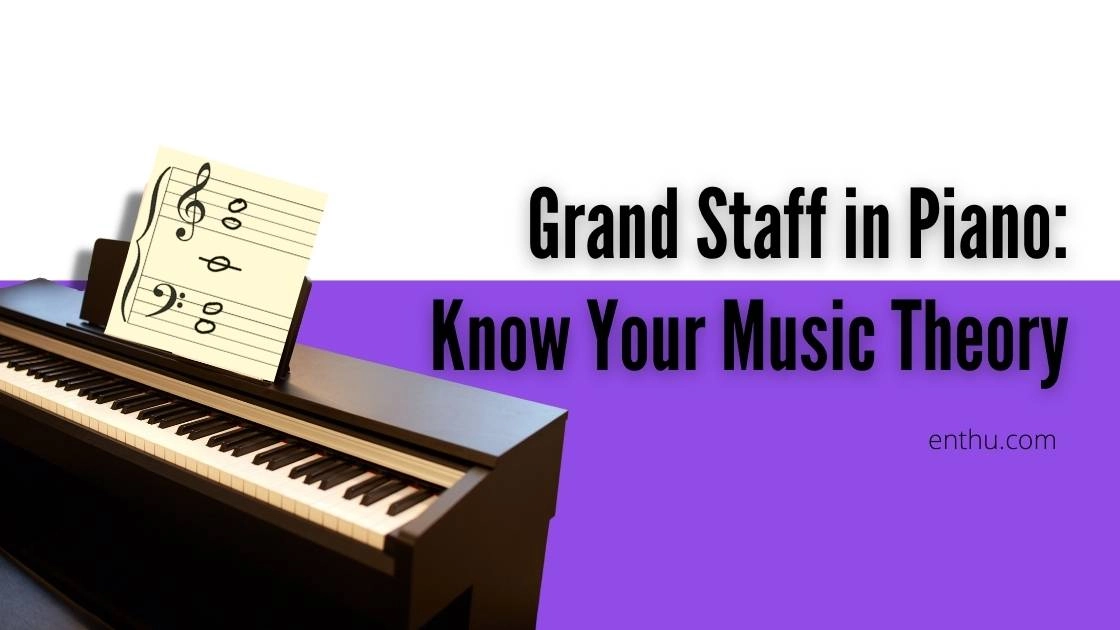
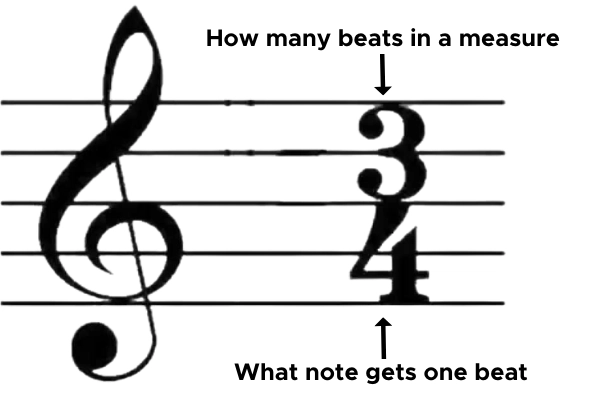
Describing a key signature might be confusing for you at first. Usually, it depends on the number of beats on the measure and the note value each measure gets.
For example, while describing a 4/4 time signature, you should say that there are 4 beats per measure. Add that the quarter note gets the beat to make it more precise. Make sure you check out cut time music theory to find out how many beats in cut time per measure.

How to Group Notes in Bars and Measures?
Before talking about time signatures, it is important to discuss what we need them for. First of all, key signatures make the notes easier for the pianist.

It helps them put the notations into small groups to create the desired sound effect. Usually, notes in a time signature are grouped in two, three, and four.
What is a Meter?
Meter, also known as Metre, is a rhythm pattern that is made for grouping the beats (temporal units). In Western Music Notations, every measure starts from the adjoined bar lines.
Meters help you keep track of the tempo and common rhythm of a particular composition. Don't forget to check out note length and rhythm guide.
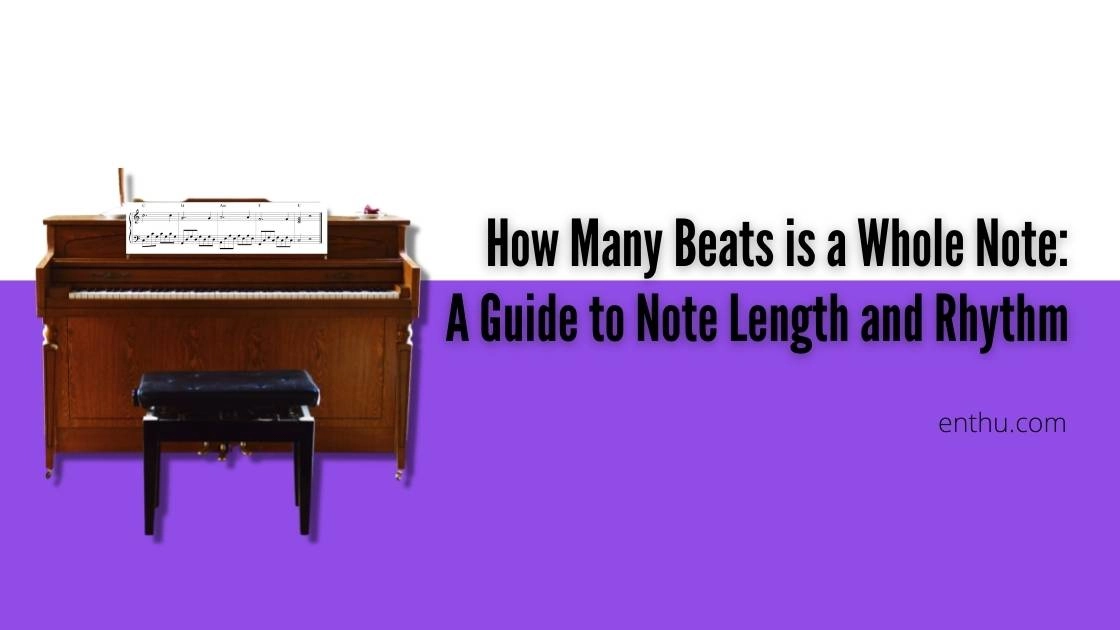
The Two Numbers in a Time Signature
As you have already seen, time signatures consist of two numbers written under another. The number on the top represents the number of beats in every measure. On the other hand, the number on the bottom represents the note values of the beats.
For example, a 3/4 key signature means there are 3 beats in every measure and 2 crotchet beats in one bar.
Here, the bottom number is 4, so it means the beats are quarter notes. You can also say that there are four quarter notes in a measure.
1. What is a 6/8 Time Signature?
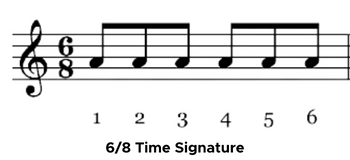
You have already learned about the two numbers on a time signature. So, a 6/8 time signature means you have to count eighth notes 6 times on each bar.
This time signature is one of the most famous and extensively used in music. House of the Rising Sun by Animals and From the Inside by Linking Park are two great examples of 6/8 time signatures.
While playing a 6/8 time signature, you have to count the beats like this: 1, 2, 3, 4, 5, 6, 1, 2, 3, 4, 5, 6, etc.
2. 6/8 Time Signature Example
The 6/8 time signature means you have to count eighth notes 6 times in each bar. This is one of the most popular time signatures. Rock and roll musicians from the 1950s till now have extensively used this time signature in their songs.
You might get confused about counting initially, but it is easier than you think. You have to count it in this manner: 1, 2, 3, 4, 5, 6, 1, 2, 3, 4, 5, 6, and so on…
3. Can You Reduce 6/8 to 3/4?
No, you can't reduce 6/8 to 3/4. You might argue that both the time signatures consist of the same ratio, but these two are fundamentally different. The 6/8 time signature is built with 2 groups of 3 eighth notes.
On the other hand, the 3/4 time signature is organized with 3 eighth notes on 2 groups. This is the main difference between these two-time signatures, as they will create a slightly different soundscape for a song or composition.
So, if you are using any of these time signatures in a composition, the 6/8 will feel like a 2, and 3/4 will look like a 3. 3/4 and 4/4 time signatures are simple meters, and these are easy to play and manipulate.
On the other hand, 6/8 is a compound meter, where you can hear the pulse in complex compositions as a grouping of 3 notes.
4. How to Easily Recognize the 6/8 Time Signature?
Count the beats. It should be 6 beats per bar.
Check whether the 1st and 4th beats (quarter beats) are emphasized. Sometimes it can be 1st, 3rd, and the 5th as well. (If only the 1st beat is emphasized, it is a 3/4 key signature)
Lastly, listen carefully to whether every beat is divided into three beats. If it is, then the time signature is 6/8.
5. How does 6/8 Sound and Feel?
Even if you are not a professional pianist, you can determine if a song is written in a 6/8 time signature.
The first and foremost thing that will strike your ears is the 'Waltz' like sound it offers, which is fundamentally different from the set-piece soundscape of 2/4 and 4/4 time signatures.
Actually it depends on the type of note on a stave. Also, the 6/8 time signature gives off less rigid beats than the traditional waltz time signature.
Iconic songs on 6/8 Time signature
Norwegian Wood – The Beatles
We are the Champions – Queen
House of the Rising Sun – Animals
Nothing Else Matters – Metallica
Hotel California – The Eagles
From the Inside – Linkin Park
Gravity – John Mayer
Hallelujah – Jeff Buckley
Subterranean Homesick Alien – Radiohead
Scarborough Fair – Simon and Garfunkel
As you can see on the list, the 6/8 metered time is a versatile composition tool that can be used in different ways, ranging from Rock and Roll to modern-day Pop and Progressive Rock music.
The great piano composer Beethoven also used this metered time (based on sixteenth notes) to in many of his pieces. Once you get a hold of this beautiful time signature, you can also use it in your music compositions.


Conclusion
Time signatures can be tricky at times despite opening up an unexplored horizon. Do you want to know the secret to getting better? Well, the golden rule is to practice. Ask your piano instructor to guide you through the path and start practicing as much as possible. Go ahead with your piano learning journey and live in music. Goodbye!
FAQs
1) What does added time signature mean?
Added time signature means adding time signature to the existing one. However, according to Western Music Theory, you can only submerge two simple meters together. Added time signatures specifically help you play complex chords on the piano.
2) What kind of time signature is 6/8?
6/8 meter time is a compound time signature. However, don't assume that this time signature is a submerged version of the 3/4 time signature. The former consists of 6 eighth notes (half note) per beat, emphasizing either 1st and 4th, or 1st, 3rd, and 5th.
3) What note receives one beat in 6/8 time signature?
The 6/8 measure consists of 6 eighth notes. So, in every 6/8 composition, the eighth notation receives one beat every time you play notes based on it. It means the 8th note (the main beat) repeats after the completion of every quarter note beat.

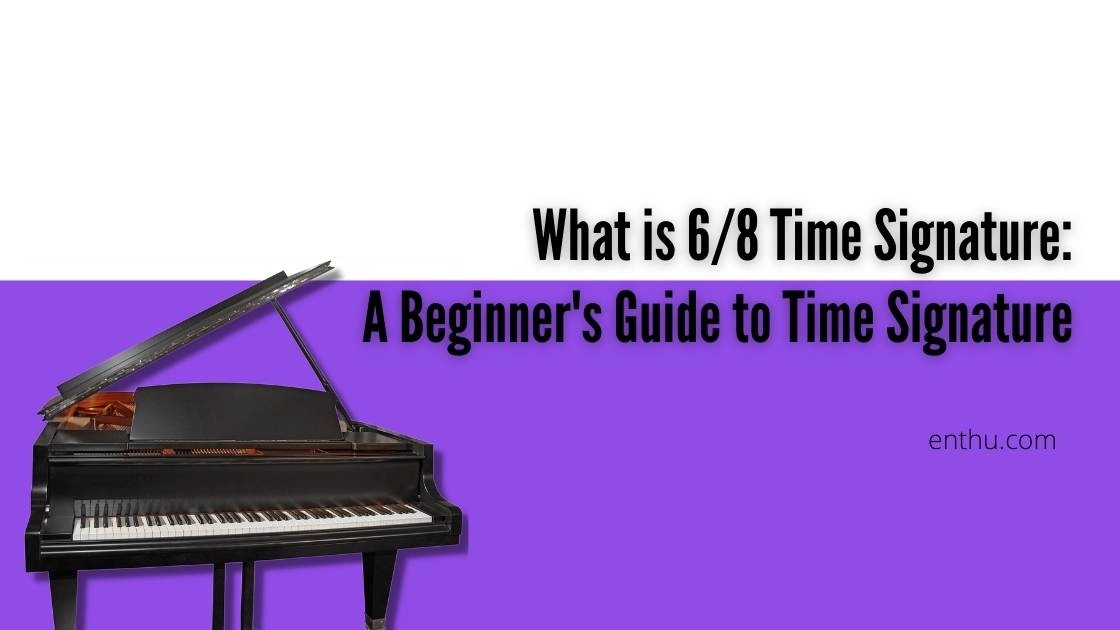
Comments